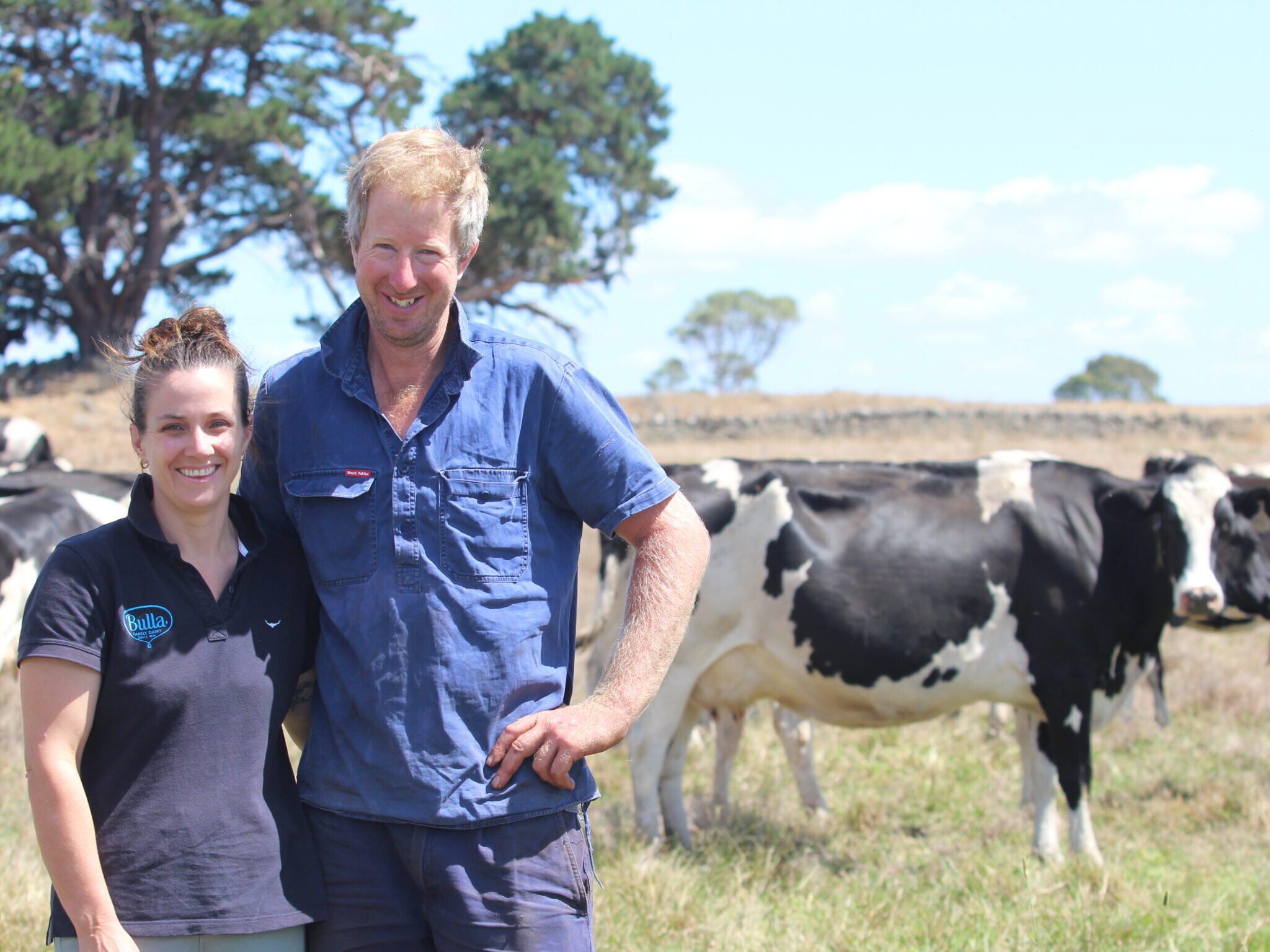Extra information aids business progression
Dale and Karen Angus
Region: South-West Victoria
Topic: Genomic testing
Deciding which animals to retain for their milking herd has become easier for one south-west Victorian dairy farming family. They are also making more informed and confident breeding, culling and bull selection decisions, thanks to the addition of genomic testing.
Ondit dairy farmers Dale and Karen Angus began genomic testing their young stock four years ago.
The information gathered through these DNA tests is used alongside herd recording and visual assessments of animals to make herd management decisions.

Karen and Dale Angus use genomic testing to help to make informed, data-supported decisions about which animals stay or go.
“Genomic testing helps us to make informed, data-supported decisions about who stays and who goes from a genetic perspective,” Karen said.
The final decision is based on genomic data and a visual assessment of the animals made by Dale.
Dale and Karen milk 400 autumn-calving Holsteins with their children Charlotte, 10, Indianna, 9, and Clancy, 4, in a predominantly grazing system, north of Colac.
The Angus family was introduced to genomic testing when they participated in the Dairy Australia Focus Farm program.
At the time they were intrigued by how other farmers were selecting heifers for the export market.
What began as a “casual lunchtime discussion”, on the sidelines of a Focus Farm meeting, has morphed into an important part of their farm and a contributing factor to their business progression.
The latter benefit is something they attribute to making more informed decisions with the genomic data.
Thanks to genomic data “taking away the guesswork”, Karen and Dale have also felt more empowered in discussions with breeding advisers.
“We’ve developed a much broader understanding of genetics, certainly this year and last year, and it has helped us make decisions about the bulls we use,” Karen said.
“We understand the data a lot more, opposed to having catalogues put in front of us. We make our own decisions.
It’s our business, not their business and at the end of the day we need to be comfortable and confident in each decision.”
They use DataGene’s Balanced Performance Index (BPI) and consider several traits when selecting bulls and evaluating their heifers.
The traits they concentrate on include fertility, milk fat and protein percentage, yield, and survival.
BPI has the “most weighting” but fertility is a close second.
“We rank them by BPI first and then look at individual traits,” Karen said.
“For us, fertility is something we are striving to improve in our herd since we started on our own seven years ago.”
Practically, this means if there was a “toss-up” between two high BPI animals, the one with the higher fertility would be selected.
Karen and Dale choose to use tissue sampling for their genomic testing because it has a lower risk of contamination and incorrect sample collection.
All calves are dehorned, freeze branded and have the tissue sample – for genomic testing – collected at the same time.
When it comes to deciphering their genomic data, Karen and Dale found the colour-coding in the report from their genomics service provider was a helpful visual tool to enable quick analysis of the results.
The number of heifers retained by the Angus’ is determined by the number replacements required.
The Angus family are looking forward to milking more genomically tested cows as increasing numbers of tested calves move into the herd.
They believe that the information generated by genomic testing will inform more of their breeding decisions as a higher percentage of the milking herd is tested.
Genomic testing is something that Dale and Karen believe will improve their business bottom-line because of its ability to improve their genetic base.
“Genetics might only be a small part of our business, but it is often the one percenters that determine how profitable and sustainable our business is,” Karen said.


